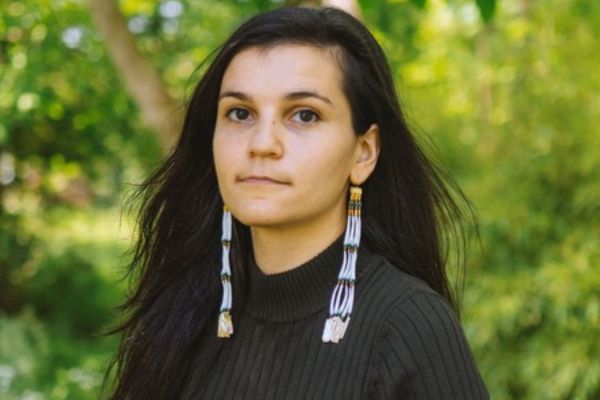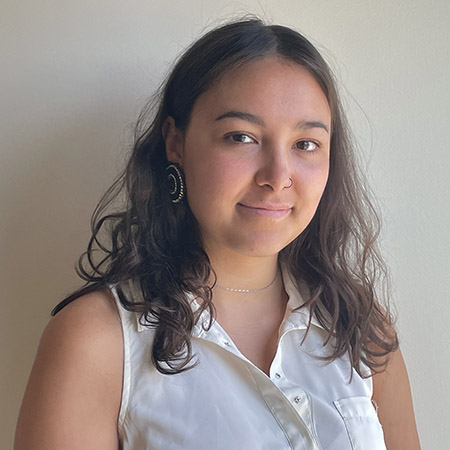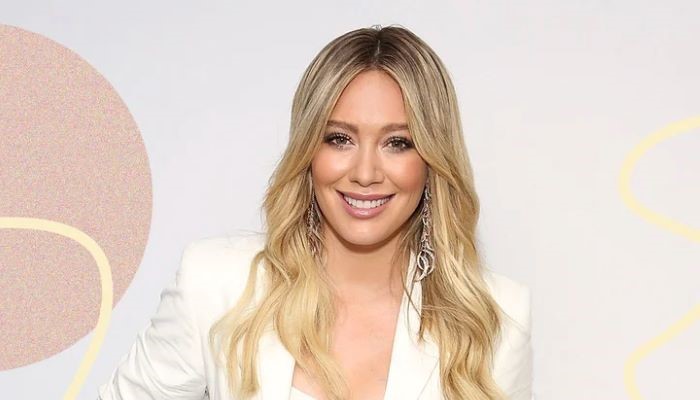
- Particulars
- By Neely Bardwell
-
The Brooklyn Museum lately employed its first full-time Indigenous Artwork curator.
Artwork historian Darienne Turner, an enrolled member of the Yurok Tribe of California, will formally be a part of the Brooklyn Museum this August. She is at present an assistant curator of Indigenous Artwork of the Americas on the Baltimore Museum of Artwork, the place she has labored since 2017.
On the Baltimore Museum of Artwork, she was the primary Native individual to carry a curatorial function. She obtained her Bachelor of Arts in comparative literature at Stanford College and studied the literature of the Americas. Turner additionally studied materials tradition at Bard Graduate Middle whereas taking lessons on the Institute of American Indian Arts.
Native Information On-line sat down with Turner to debate her future plans because the Brooklyn Museum’s new Indigenous artwork curator, combating to incorporate Indigenous views and creating house for extra Native Individuals within the museum trade.
This interview has been edited for readability and size.
By no means miss Indian Nation’s largest tales and breaking information. Signal as much as get our reporting despatched straight to your inbox each weekday morning.
What impressed you to turn out to be an artwork historian?
I grew up in a family that was stuffed with Yurok baskets. My great-grandmother was a grasp basket weaver, and different girls in my household have taken that up as properly. I actually really feel like that serves as the muse of my curiosity in artwork historical past. I at all times liked going to museums rising up however seeing Native illustration and museums was not at all times a contented expertise.
I bear in mind seeing Native individuals and cultures on view in pure historical past museums, and it’s painful to see Native artwork, individuals, and diagrams of Native individuals subsequent to dinosaur bones. I’ve even been to museums as an grownup and cried as a result of I simply really feel prefer it’s so unjust that Native individuals are misrepresented as artifacts of the previous. So that basically pushed me to concentrate on artwork historical past.
I’ve studied a wide range of contexts, so it’s not at all times simply been Native artwork. In the end, it simply at all times comes again to this query, although, of how Natives need to be seen in areas which are often not Native centered — notably encyclopedic museums, the place they’ve collections from everywhere in the world all the time. They don’t have an amazing monitor document with regards to Native artwork, so there’s plenty of work that must be executed.
One phrase that we hear within the trade rather a lot is “decolonize.” “Are you going to decolonize the museum?” My stance is that’s a useful time period in some respects, however finally, we will’t decolonize one thing that’s so profoundly colonial. These are encyclopedic museums stuffed with items that had been taken up via colonialism, artworks that had been taken from Native individuals, and possibly they had been bought or possibly not. We simply really want to reckon with the truth that colonialism is alive in these establishments, and it’s one thing that must be pressed upon and interrogated and fought towards.
What has been your expertise going via archives and going via Indigenous artifacts that museums maintain?
I believe one of many largest advantages of being a curator is having the ability to be with all of the family which are mirrored in our objects. So my favourite factor to do is to stroll into our vault and simply take heed to what needs to be heard. Typically which means bringing Native elders or tradition bearers via the vault and simply opening every drawer up and seeing what they wish to converse to, what objects require consideration, and possibly the database data was lacking.
Possibly there are extra tales that may be instructed about these specific objects that we didn’t know once they had been accepted again in 1956 or every time. So to me, that’s actually essential. Truly, simply listening to the objects was one thing that impressed my Lakota beadwork present that placed on view objects that Lakota girls had beaded American flags onto on the flip of the century. That was a extremely profoundly traumatic time for the Lakota individuals. They’ve simply been pressured on the reservation. So seeing these objects actually pressed me to ask the query, “Why would these individuals put the image of their oppressor on children’ clothes, you realize, on males’s vests on boots?”
That was actually what propelled me into curating my first exhibition on the BMA, simply exploring that historical past and uncovering or rediscovering Lakota individuals knew this all alongside. However uncovering the story. Within the BMA that these had been actually symbols of resistance. This was a approach that might code if individuals may keep cultural practices that might be in any other case stamped out. You set a flag on it and rejoice, quote, unquote, rejoice Fourth of July. Then you are able to do purity ceremonies and giveaways as, and you realize, battle reenactments that weren’t allowed in some other context.
One phrase that we hear within the trade rather a lot is “decolonize.” “Are you going to decolonize the museum?” My stance is that’s a useful time period in some respects, however finally, we will’t decolonize one thing that’s so profoundly colonial.
So what are a few of your roles and duties going to be as the brand new curator on the Brooklyn Museum?
In my thoughts, the largest factor is at all times going to be neighborhood connections. Brooklyn has an amazing monitor document of doing wonderful exhibitions and programming that facilities Native Voices right this moment and appears at historic Native artworks. So I get to construct upon that legacy, which is such an exquisite factor. Bringing neighborhood members into the dialog and phone with their family, their family being the artwork objects, is so essential to me. Ensuring that Native voices are seen all through the museum is de facto essential.
I will likely be engaged on a reinstallation of the American artwork wing, which is tremendous thrilling. In the long run, I will likely be engaged on particular exhibitions that mix historic and up to date artwork. And long term than that, I will likely be engaged on a full assortment reinstallation.
So whereas it’s actually essential that Native tales get instructed in that American artwork context as a result of Natives are Individuals, it’s additionally essential to inform Native tales on their very own phrases outdoors of the paradigm of colonialism. So by doing a reinstallation that’s simply centered on Native artwork, you’re allowed to inform tales that don’t essentially match into different artwork historic canons.
Figuring out that many museums disproportionately exclude Indigenous views, how do you intend to battle towards that?
I simply actually need museums just like the Brooklyn Museum to ask: “How are we related? Who’re we related to? Who’s our core viewers, and the way can we ensure that Native individuals match into that rubric?” Management issues, and there may be an openness to doing that sort of laborious work and self-interrogation and occupied with what it means to be a colonial establishment.
So asking questions on how I can facilitate higher relationships with our Native viewers members and encyclopedic museums is de facto central to what I’m occupied with, and in addition asking, “What’s the goal of the artworks and the repositories that maintain them? What’s our duty as a corporation, and extra particularly, what’s my duty as a local individual in a largely nonnative employees, and all through my profession?” I’m used to being the one Native American, the primary Native American that ever did any curatorial work.
On the Baltimore Museum of Artwork, it’s like I’m the primary and the one. That ended up being my expertise rather a lot, however via that, I hope to create space for others and ensure that there are alternatives for different Native museum professionals to be concerned or Native people who acquire entry to areas that haven’t been there beforehand.
How does it really feel to be the primary Native in plenty of these areas?
It feels good, however it’s additionally laborious. There’s a giant duty that comes with that. I really feel like I should be held accountable to my neighborhood members, and whereas that’s an unimaginable privilege, it’s rather a lot. It’s rather a lot to be the one one.
As a lot as I could make house for different professionals, I do. I used to be in a position to deliver a extremely pretty curatorial analysis assistant to assist with the preoccupied undertaking whose Osage. To me, it was so essential to have the ability to rent another person who’s Native, so we will help one another, and I can work with somebody who simply will get it, who is aware of what it’s like. So to me, all of us have to create space for each other and ensure we’re lifting up all of the Native voices that we will.
Extra Tales Like This
Right here’s What’s Happening in Indian Nation, June 30 —July 7
Q&A: Two-Spirit Actor and ‘Reservation Canine’ Star Elva Guerra
Q&A: Two-Spirit Artist Jamie John
What’s Right here’s What’s Happening in Indian Nation, June 24 —July 8
Native Information is free to learn.
We hope you loved the story you’ve got simply learn. For the previous dozen years, we’ve lined crucial information tales which are often neglected by different media. From the protests at Standing Rock and the rise of the American Indian Motion (AIM), to the continuing epidemic of Murdered and Lacking Indigenous Individuals (MMIP) and the past-due reckoning associated to assimilation, cultural genocide and Indian Boarding Colleges.
Our information is free for everybody to learn, however it isn’t free to provide. That’s why we’re asking you to make a donation to assist help our efforts. Any contribution — massive or small — helps. Most readers donate between $10 and $25 to assist us cowl the prices of salaries, journey and sustaining our digital platforms. In the event you’re able to take action, we ask you to think about making a recurring donation of $12 per 30 days to hitch the Founder’s Circle. All donations assist us stay a drive for change in Indian Nation and inform the tales which are so usually ignored, erased or neglected.
Donate to Native Information On-line right this moment and help unbiased Indigenous journalism. Thanks.


